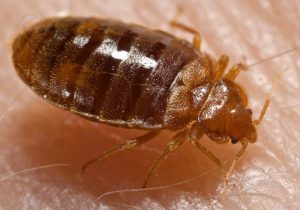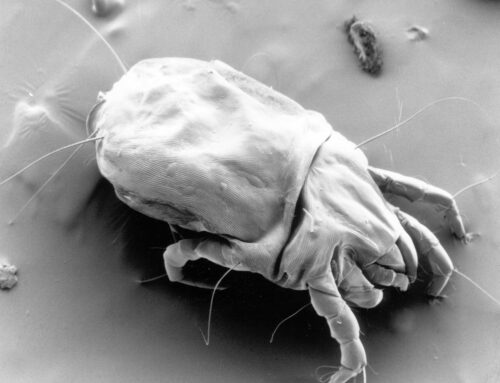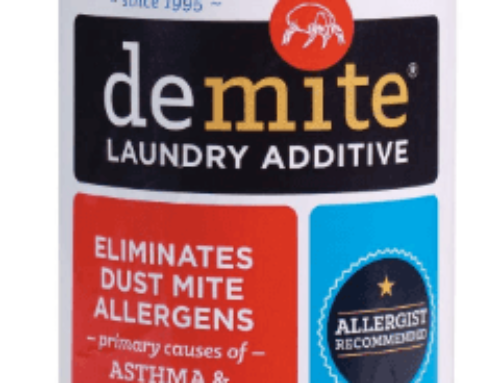Table of Contents
You woke up in the morning after an uneventful sleep, and notice a few bumps of bite marks on your arm. You’ve heard of pests that may be invading your space and you’re wondering if dust mites have been biting you while you’re asleep.
So, do dust mites bite humans?
The short answer is no. Dust mites, as horrendous as they may seem, do not bite humans.
What Does Dust Mites Feed On?
While dust mites don’t feed on humans’ flesh nor suck their blood, these microscopic creatures chew on the dead skin cells that you’ve been shedding on all day. On average, an individual will shed about 1 million skin cells in 24 hours.
That’s ample food supply to grow colonies of dust mites in your home.
The bed is often a common suspect of dust mite infestation as an individual spends an average of 7 hours sleeping and shedding dead skin cells on it daily. Carpets, rugs, upholstery, sofas and other items in your home that you interact with may also gather dead skin cells to fuel the growth of dust mites.
Dust mites have a rapid growth rate when they are fed sufficiently and live in an environment that is conducive. These tiny creatures prefer spaces that are humid (70%-80% RH) and moderately warm temperatures (20 – 25 degrees Celcius).
If Dust Mites Don’t Bite Humans, What’s Causing The Bite Marks?

If you’ve been getting bite marks and bloodstain on the lines for a few nights, you may have some unwanted visitors in your bedroom. These visitors are not dust mites, as we’ve clarified on that. Chances are, you’re bitten by the nocturnal bed bugs, which unlike dust mites, feed on human blood.
Like dust mites, bed bugs share the same preference of the surrounding environment. A warm and humid room attracts bed bugs. However, bed bugs don’t hide in the mattress. They are often found in cracks and wooden crevices.
Bed bugs are much larger than dust mites and are visible when you’re paying attention to spotting one. These nocturnal bloodsuckers have the appearance of a flat apple seed. They are brownish and belongs to the insect family.
Often, you won’t waken up by bed bugs bite as they inject an anticoagulant into the wound. The anticoagulant explains the occasional bloodstain is it prevent blood from clotting when the bedbugs are feasting.
Bed bugs bites are often treated with anti-itch creams and calamine lotion. In some cases, pain reliever is prescribed and anti-histamine medicines are used.
Are Dust Mites Harmless Then?
Just because dust mites don’t bite, it doesn’t mean that they are completely harmless. Far from it, dust mites are often considered more dangerous than bed bugs. This is due to the excretion of dust mites, which contain a form of protein that triggers allergic reactions in some individuals.
Both children and adults can exhibit allergy symptoms to dust mites. Here are some of the tell-tale signs.
- Itchy, teary eyes.
- Runny nose.
- Coughing.
- Sneezing
- Skin rashes.
- Nasal inflammation.
It is important to get these symptoms treated, especially for children, as it could lead to asthma.
When you’re suffering from the symptoms, daily activities can be affected. Nasal inflammation can cause distress amongst children and may affect their sleep. Without laying a single bite, the complications caused by dust mites are more severe and long-lasting.
Getting Rid Of Dust Mites
Regardless of whether dust mites are biting humans, they are unwelcomed in your home, especially if you or your family are showing signs of allergy. While it’s impossible to eliminate every single dust mite, you can reduce the population to a harmless level.
The good news is, dust mites are fragile creatures. Dust mite’s growth are stunted when the humidity shifted from their preferred range. They are easily killed in temperature exceeding 55 Degree Celcius. Here are a few quick tips to help you remove dust mites from your home.
Wash beddings at least once a week. You’ll want to turn up the temperature in the washer or dryer to kill dust mites that are present in the bedsheets or pillowcases. You’ll want to pay more attention to the mattress, as you may have more dust mites hiding in it. Using a UV vacuum cleaner with powerful suction helps to neutralize dust mites in your bed.
You’ll also want to clean carpets, rugs, and upholstery which are perfect hiding places for dust mites. Consider using certain types of essential oils or natural dust mite sprays. These will reduce the growth of dust mites in your home.
Check out more tips on getting rid of dust mites in this article.
Bottom Line
Dust mites don’t bite humans, but they aren’t to be taken lightly. The uncontrolled growth of dust mites often leads to serious allergy symptoms in some people. So, start getting rid of dust mites, or at least, avoid making your home’s environment conducive for these creatures.
Do you suffer from dust mites allergy? Or have you been bitten by bed bugs? Share your experience in the comment below.
Related:




Wow, that is a shocker. I could feel the hairs rising on my skin. EWWW. This is a very informative article I think everyone needs to read it and make sure that they do not have any of these little critters in their home. My son often has a stuffy nose maybe this is the cause something to think about. I am so going to inspect his bed right now. Thank you Kenny
Hi Kay,
You’re welcome. Hope your son’s stuffy nose isn’t due to dust mites. Else, you’ll be in for a long drawn battle with the tiny pests.
Cheers,
Kenny
How do you know you are allergic to dust mites and not some other allergen? Is there a test you can take from a dermatologist? I’ve been having problems with some allergies I’ve never had before when I moved into my dad’s house. It appeared as “little brownish/grayish spots or bug like spots” were on my clothes in the closets and bedding. We even had a professional exterminator spray the home inside and outside for possible fleas and tick infestation with little change to my reaction to the allergic reaction to the environment. Do you have any thoughts or resources that might help my search as to the cause of my problem? Thanks for your site and research……I will take up the diatomaceous earth and essential oils diy remedies. I appreciate your trying to help others in this cause. Have you heard of diatomaceous earth pills and if so which brand do you suggest? With much gratitude, Sam
Hi Sharon,
Doctors usually perform the skin prick test to verify if its dust mites allergen that is triggering the allergy. You may want to consult your doctor about this.
I’m not sure about diatomaceous earth pills but I do believe some people take it for health issues. However, for killing dust mites, you’ll need to buy those in powder form. Make sure you’re choosing food-grade type. This list should be helpful.
As for the brownish spots, maybe it’s due to fungal growth. It helps if you can check the humidity of your room. If it’s anything above 70%, chances are, you’ll have tons of dust mites as well.
Hope this helps.
Cheers,
Kenny